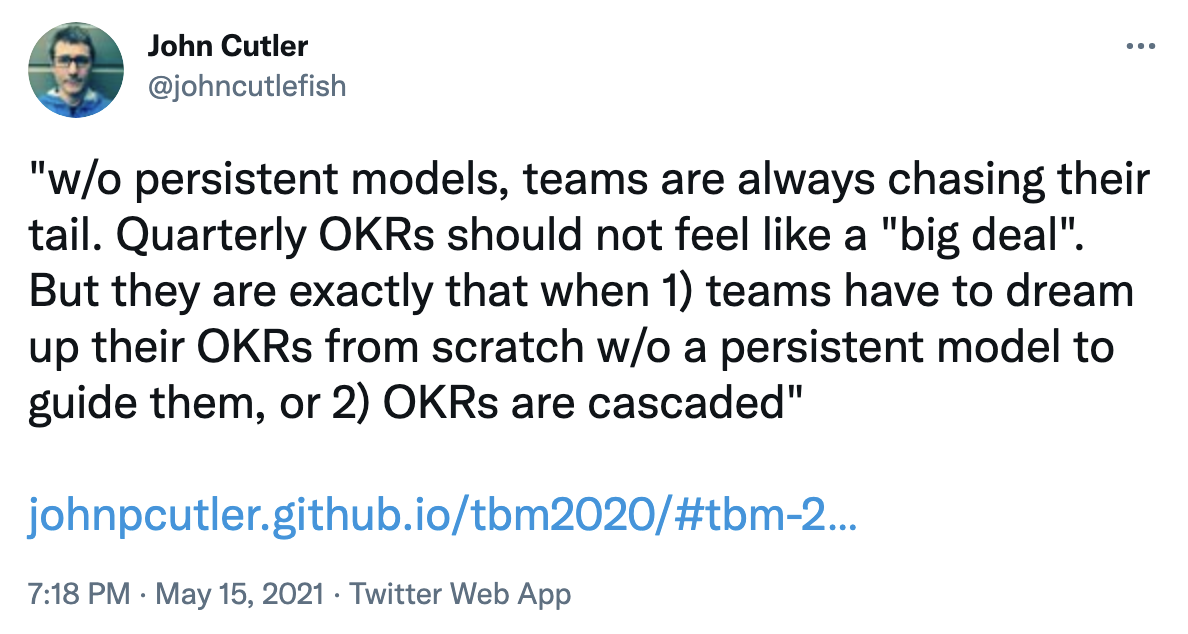There are a few documents that are key to create a culture where outcomes are at the center. Quite often, it simply boils down to extracting existing knowledge from people to write it down in a structured way.
#1 Vision document

As John Cutler puts it, it is important to have a persistent model that the team can look at to understand the focus of their organization. The vision document is meant to be a North Star that will guide efforts for the next couple of years.
It doesn't have to be complex. You can build a simple vision doc by creating a 1-pager with the following sections:
- Purpose: this is why you exist.
- North star metric: a target for your main KPI (12-18 months).
- Focus areas: big themes for the next 12-18 months.
- Measures: what success looks like for the focus areas.
This document should be readily available to the team and looked at every quarter.
#2 Customer persona(s)
There's probably one or two specific groups of people that will get a lot of value from your product. The better you are at defining that group, the easier it will be to find customers.
This is where customer personas can help. It should be a simple document that outlines the characteristic of your ideal customer. Where do they work? What kind of team? Where do they hang out? Don't go overboard with it, but pick 5-7 criteria that can help you define what a good lead vs. bad lead can be.
This document help you have the right tone and angle in your marketing assets, onboarding docs, and product.
#3 BAUs KPIs
Is your business healthy? Business-as-usual KPIs should answer that question. Ideally, you'll want to have 10-15 metrics that can help you understand your funnel and keep an eye on your growth.
The purpose of your KPIs isn't to drive your roadmap but rather to make sure that your projects are not hurting your business – think of it as monitoring your vitals. We'll see in the next section how you can use KPIs vs OKRs to improve your baselines.
#4 OKRs
While metrics are a big part of the OKRs framework, its true purpose is alignment. You use OKRs to focus the attention of your org on specific aspects of your business during a given quarter. The end goal will often be to improve a particular set of KPIs.
- KPIs: monitor the health of your business.
- OKRs: focus your efforts on improving specific aspects of your business.
OKRs are not meant to replace roadmaps. They represent the outcomes you're working towards, and you still need a place to see what outputs can help you get there.
#5 Now, next, later roadmap
As mentioned in the previous section, you'll need a roadmap to keep track of your projects. But beware of using a timeline! If you want to get the best out of your OKRs, it will be crucial to adopt a model that keeps things agile. Time-based roadmaps put too much emphasis on when things are shipped, instead of the impact they have.
A now, next, later roadmap will help you keep debates centered around outcomes, and it'll be much easier to adjust priorities as you learn from your customers.

.jpg)
.png)

.jpg)


.png)








